Volume 30, Issue 3
Displaying 1-4 of 4 articles from this issue
- |<
- <
- 1
- >
- >|
Special Topics on the Mini Symposium at the 30th Meeting of Japan Society of Immunology and Allergology in Otolaryngology
-
2012Volume 30Issue 3 Pages 237-242
Published: 2012
Released on J-STAGE: October 12, 2012
Download PDF (771K) -
2012Volume 30Issue 3 Pages 243-250
Published: 2012
Released on J-STAGE: October 12, 2012
Download PDF (611K) -
2012Volume 30Issue 3 Pages 251-257
Published: 2012
Released on J-STAGE: October 12, 2012
Download PDF (1954K)
Retraction
-
2012Volume 30Issue 3 Pages 259-
Published: 2012
Released on J-STAGE: October 12, 2012
Download PDF (96K)
- |<
- <
- 1
- >
- >|
